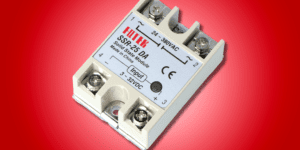Spis treści:
Even when untrainedly disassembling or looking at electronic equipment, the distinctive metal ring wrapped with copper wires catches the eye. This tasty looking component is toroidal transformer, which, along with the E- and I-shaped versions, is a fairly common component of electrical devices. Today a little about what functions it performs in electrical systems and its advantages.
What causes the transformer?
This is a much better asked question than “how does it work”. The key role of transformers in electronic systems is voltage adjustment. The mains voltage of a home outlet of 230V is too high for devices such as TVs, audio players and computers.
The transformer is responsible for lowering it and ensuring that it can operate safely – otherwise, the list of problems opens with unstable operation, ending with burned-out components and even the risk of fire. A transformer can also increase the voltage – an example of an appliance with higher requirements is a microwave oven, as it turns out that heating food requires as much as 2000V.
The change in voltage is made possible by taking advantage of the phenomenon magnetic induction. A transformer usually has a pair of windings – primary and secondary.
When AC current flows through the primary winding, an alternating magnetic field is created, which induces a voltage in the secondary winding. If the number of turns on the secondary coil is greater than the number of turns on the primary coil, the output voltage will be higher. Similarly, if the number of turns on the primary coil is higher than the number of turns on the secondary coil, the output voltage will then be lower.
Toroidal transformer - construction
First toroidal transformers appeared in the late 19th century. At the time, there was no efficient method of winding the winding onto the core, so the work had to be done by hand. In essence, the production costs of such transformers outweighed the advantages of using them. It was only with the development of technology in the mid-20th century that the process of winding copper wire onto a core could be mechanized, which translated into lower production costs. Among the components that make up a toroidal transformer, we can distinguish:
- A torus-shaped core (a rotating surface associated with a tire) around which windings are wound. It is made of a material with ferromagnetic properties, such as iron or a magnetic alloy. The magnetic properties of the core play a key role in voltage transformation, as they affect the transformer’s ability to concentrate and transfer magnetic flux.
- Primary winding connected to the output voltage source. The number of windings in the primary coil and the voltage applied to it determine the primary voltage and winding ratio of the transformer.
- The secondary winding, which is isolated from the primary. It is connected to the output of the transformer. The number of turns in the secondary coil relative to the primary coil determines the voltage transformation factor.
- Insulating material used to separate primary and secondary coils. Prevents electrical contact and short circuits between coils. In addition, insulating materials are applied to the cable to protect it from discharges and other hazards.
- Feeder wires – these are connected to the ends of the primary and secondary windings. They serve as the input and output terminals of the transformer. The wires are usually routed outside the transformer housing for connection to an external circuit.
Advantages of a toroidal transformer
Using toroidal transformers in electronic equipment brings many benefits. One of their main advantages is high efficiency – they simply waste less energy in the form of heat during the voltage transformation process, and this translates into improved overall thermal efficiency. The toroidal shape allows for a more practical and handy design, making toroidal transformers smaller and lighter compared to other types of transformers. This is followed by a familiar argument from assembly electronics – size is especially important in space-constrained circuits. In addition, the closed core design minimizes magnetic cavities, which reduces electromagnetic interference and radiation, thus protecting sensitive circuit components. Reduced magnetic leakage and minimal core vibration translate into lower audible noise, which will find ideal use in audio equipment.
Toroidal transformers are characterized by exceptional durability. The parts they consist of, such as copper windings, wear out more slowly than other transformers. In addition, the toroidal core design is more resistant to saturation, allowing them to withstand sudden increases in load caused by short overloads. The insulation used between the primary and secondary windings increases the safety of the entire system, making this transformer ideal for devices sensitive to voltage spikes.
Electronics amateurs who are engaged in building their own devices rely on toroidal transformers for their ease of assembly, which requires simple workshop tools and brackets. To conclude: flexibility. Toroidal transformers operate over a wide range of frequencies, and this means they can be tailored to meet specific voltage, current and impedance requirements. Toroidal transformers are worth using wherever low noise and a low magnetic profile are sought – not only in fairly obvious audio applications, but even in industrial electronics power systems or measurement equipment.
How useful was this post?
Click on a star to rate it!
Average rating 5 / 5. Vote count: 1
No votes so far! Be the first to rate this post.







